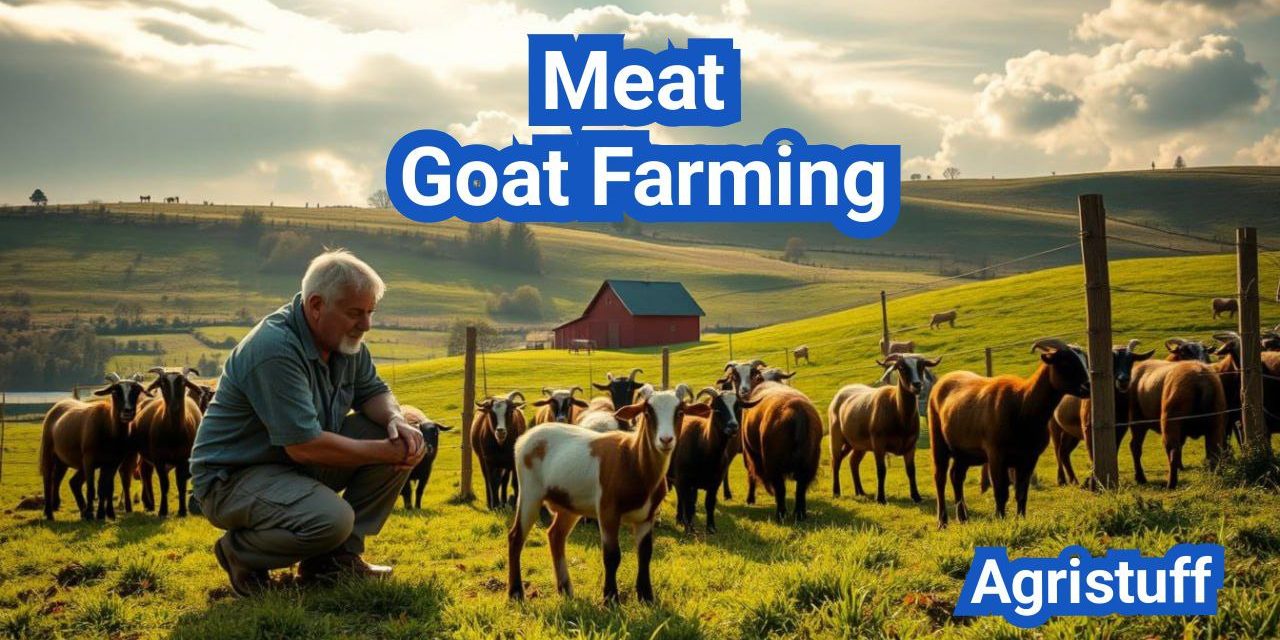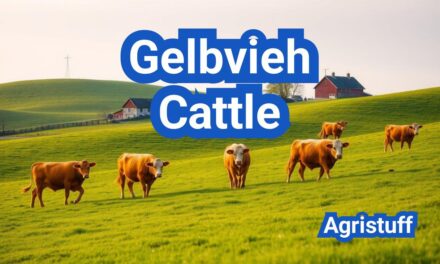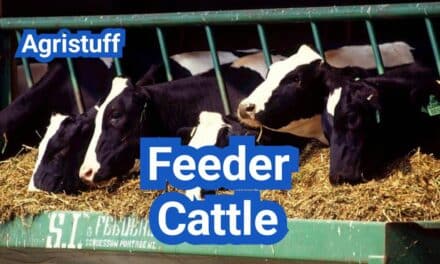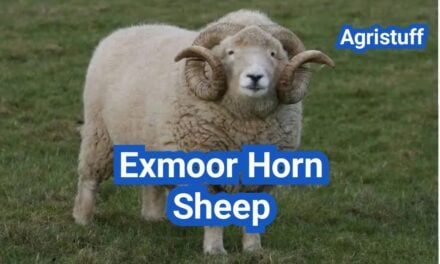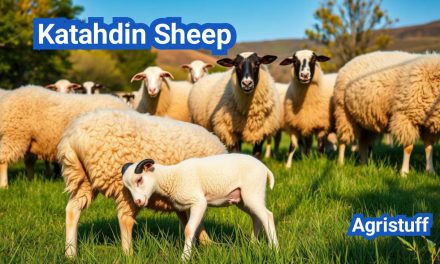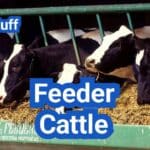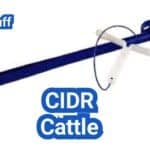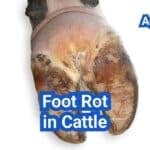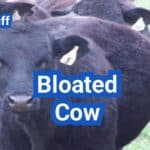Embarking on a meat goat farming journey can be a lucrative venture, given the rising demand for goat meat and its potential for profitability. As a beginner, understanding the basics of goat farming is crucial for success.
This beginner’s guide aims to provide a comprehensive overview of the essential steps and considerations for starting a successful meat goat farming operation. With the right knowledge and planning, you can capitalize on the growing demand for goat meat and build a profitable business.
Key Takeaways
- Understand the basics of goat farming for a successful start.
- Learn about the growing demand for goat meat and its profitability.
- Discover essential steps for starting a meat goat farming operation.
- Gain insights into planning and managing a profitable goat farm.
- Explore the key considerations for beginners in meat goat farming.
The Growing Demand for Meat Goat Farming in America
The U.S. meat goat industry is experiencing significant growth, driven by various market trends. As the demand for goat meat continues to rise, farmers are presented with a lucrative opportunity to capitalize on this emerging market.
Current Market Trends in the United States
The market for goat meat in the United States is expanding, driven by increasing demand from ethnic communities. According to industry reports, the demand for goat meat has been steadily rising over the past decade, with an annual growth rate of 5-7%. This trend is expected to continue as the U.S. population becomes more diverse.
“The growing demand for goat meat is a significant opportunity for farmers,” says Dr. Jane Smith, a livestock expert. “With the right management practices, meat goat farming can be a profitable venture.”
Cultural and Demographic Drivers of Demand
Cultural and demographic factors play a crucial role in driving the demand for goat meat. The increasing Hispanic and Muslim populations in the United States have contributed significantly to this trend, as goat meat is a staple in many of their traditional cuisines.
- Increasing demand from ethnic communities
- Growing popularity of goat meat in traditional cuisines
- Rising awareness of the health benefits of goat meat
Seasonal Patterns and Price Fluctuations | Meat Goat Farming
Seasonal patterns and holidays significantly impact the demand and price of goat meat. For instance, demand typically peaks during the Easter and Eid al-Adha seasons, leading to fluctuations in prices. Farmers who can adapt to these seasonal patterns can maximize their profits.
| Season | Demand | Price |
|---|---|---|
| Easter | High | Higher |
| Eid al-Adha | High | Higher |
| Off-season | Low | Lower |
Understanding these market trends, cultural drivers, and seasonal patterns is crucial for farmers looking to enter the meat goat farming industry. By being aware of these factors, farmers can make informed decisions and capitalize on the growing demand for goat meat.
Assessing Your Readiness for Goat Farming

Goat farming requires a significant amount of time, effort, and resources, making it vital to assess your readiness beforehand. This assessment involves evaluating several critical aspects that will determine your success in the venture.
Required Time Commitment and Lifestyle Considerations
Goat farming is a time-intensive endeavor. It demands a consistent daily routine, including feeding, monitoring health, and maintaining infrastructure. The time commitment can be substantial, often requiring more than 2-3 hours per day, depending on the size of your operation.
A typical day for a goat farmer involves morning and evening chores. This includes feeding, ensuring access to clean water, and checking for signs of illness or distress among the animals. Additionally, farmers must regularly inspect fencing, shelter, and other infrastructure to prevent losses and ensure animal welfare.
“The biggest challenge for goat farmers is often underestimating the time and labor required to manage the farm effectively.” – Experienced Goat Farmer
Essential Skills and Knowledge | Meat Goat Farming
To succeed in goat farming, one must possess or acquire certain skills and knowledge. These include understanding goat behavior, nutrition, health management, and breeding practices.
- Knowledge of goat health and nutrition
- Understanding of breeding and reproductive management
- Familiarity with fencing and infrastructure requirements
- Ability to monitor and manage parasite control
Farmers can acquire these skills through workshops, online courses, and hands-on experience. Joining local farming associations or networks can also provide valuable insights and support.
Personal Goals and Expectations | Meat Goat Farming
Aligning your personal goals with the realities of goat farming is crucial. This involves understanding your motivations, financial expectations, and lifestyle preferences.
| Goal | Description | Considerations |
|---|---|---|
| Financial | Earning a profit from goat farming | Initial investment, ongoing expenses, market prices |
| Lifestyle | Desire for a rural lifestyle or hobby farming | Time commitment, physical demands, isolation |
| Environmental | Focus on sustainable land management | Land use practices, conservation goals, resource management |
By carefully assessing these aspects, prospective goat farmers can make informed decisions about their readiness to embark on this challenging yet rewarding venture.
Financial Planning for Your Meat Goat Farm
Effective financial planning is crucial for the success of your meat goat farm. It involves understanding various cost components, managing expenses, and identifying revenue streams.
Startup Costs Breakdown | Meat Goat Farming
Initial investments for a meat goat farm include land preparation, fencing, housing, and purchasing the initial breeding stock. The cost of land can vary significantly based on location, size, and quality.
- Land preparation: $1,000 – $5,000 per acre
- Fencing: $3 – $5 per linear foot
- Housing and shelter: $100 – $500 per goat
- Initial breeding stock: $150 – $300 per goat
Total estimated startup costs can range from $10,000 to $50,000 or more, depending on the scale of the operation.
Ongoing Operational Expenses | Meat Goat Farming
Operational costs include feed, veterinary care, and marketing expenses. These costs can vary seasonally and are influenced by factors such as herd size and management practices.
| Expense Category | Annual Cost |
|---|---|
| Feed and Nutrition | $500 – $1,000 per goat |
| Veterinary Care | $50 – $100 per goat |
| Marketing Expenses | $500 – $2,000 |
Potential Revenue Streams and ROI Timeline
Revenue can be generated through the sale of meat goats, breeding stock, and potentially value-added products. The return on investment (ROI) timeline varies based on factors like initial investment, operational efficiency, and market prices.
- Sale of meat goats: $100 – $200 per head
- Sale of breeding stock: $200 – $500 per head
- Value-added products: variable pricing
A well-managed meat goat farm can achieve profitability within 2-5 years.
Funding Options and Agricultural Loans
Farmers can explore various funding options, including agricultural loans, grants, and private investors. Understanding the terms and conditions of these options is crucial.
Agricultural loans can provide the necessary capital for startup and operational costs. It’s essential to compare rates and terms from different lenders.
Land Requirements and Farm Location Selection

When starting a meat goat farm, one of the first and most important decisions is selecting the right location. The land you choose will directly impact the health, productivity, and profitability of your operation.
Acreage Needs Based on Herd Size
The amount of land required for a meat goat farm largely depends on the size of your herd and the quality of the pasture. Generally, you can estimate that you’ll need about 6-10 goats per acre, but this can vary based on factors like vegetation density and grazing management practices. For a small starter operation, 10-20 acres can be sufficient, while larger commercial farms may require 100 acres or more.
Terrain and Vegetation Considerations
The terrain and vegetation of your land are critical factors in determining its suitability for meat goat farming. Goats are adaptable to various terrains, but they thrive best in areas with diverse vegetation, including brush, trees, and grasses. Steep or rocky terrain can be beneficial as goats are well-suited to browsing on rough land. However, it’s essential to ensure that the land is not prone to erosion and that there are adequate water sources.
Proximity to Markets and Processing Facilities
The proximity of your farm to markets and processing facilities is another crucial consideration. Being close to your market can significantly reduce transportation costs and improve the freshness of your product. Additionally, being near processing facilities can streamline your operations and help you meet demand more efficiently. Consider the accessibility of your farm to ensure that it can accommodate the necessary logistics.
Zoning and Land Use Regulations | Meat Goat Farming
Before finalizing a location, it’s vital to investigate local zoning and land use regulations. These regulations can dictate what types of farming activities are allowed, the minimum acreage required, and even the types of structures you can build on your property. Ensuring compliance with these regulations from the outset can save you from potential legal issues and fines down the line.
By carefully considering these factors, you can select a farm location that sets your meat goat operation up for success.
Essential Infrastructure for Meat Goat Farming
To ensure the well-being of your goats and the success of your farm, investing in the right infrastructure is paramount. Proper infrastructure is the foundation upon which a productive and profitable meat goat farming operation is built.
Housing and Shelter Design | Meat Goat Farming
Adequate housing is crucial for protecting your goats from extreme weather conditions and predators. The design should allow for good ventilation, be dry, and provide enough space for the goats to stand, turn around, and lie down comfortably.
Key considerations for housing include:
- Using materials that are durable and easy to clean
- Ensuring adequate ventilation to prevent respiratory issues
- Designing the layout to minimize stress among the goats
Fencing Systems and Predator Protection | Meat Goat Farming
Effective fencing is vital for keeping predators out and your goats in. The fencing system should be robust, well-maintained, and appropriate for the type of predators in your area.
Common fencing options include:
| Fencing Type | Characteristics | Predator Protection Level |
|---|---|---|
| High-Tensile Wire Fencing | Durable, cost-effective | High |
| Electric Fencing | Deterrent to predators, easy to install | Medium to High |
| Wooden or Composite Fencing | Aesthetically pleasing, durable | High |
Water Supply and Distribution Systems
Access to clean, fresh water is essential for the health and productivity of your goats. The water supply system should be reliable, protected from contamination, and easily accessible to all goats.
Key aspects of a good water supply system include:
- Using durable, food-grade materials for pipes and fittings
- Implementing a system that prevents freezing in colder climates
- Regularly inspecting and maintaining the system to prevent leaks and contamination
Handling Facilities and Equipment | Meat Goat Farming
Efficient handling facilities are crucial for managing your goat herd, from vaccinations to sorting. The design should minimize stress on the animals and make tasks easier for the farmers.
- A well-designed holding pen
- A sorting chute
- A veterinary care area
Selecting the Right Meat Goat Breeds

The success of a meat goat farming operation largely depends on selecting the appropriate breed for your specific needs and climate. With various breeds offering unique characteristics, understanding their differences is crucial for optimizing production and profitability.
Boer Goats: The Industry Standard
Boer goats are widely recognized as the industry standard for meat goat production due to their fast growth rate, muscular build, and high-quality meat production. Originating from South Africa, Boer goats have been bred for their hardiness and adaptability to various environments.
Key Characteristics:
- Fast growth rate
- Muscular build
- High-quality meat
- Hardiness and adaptability
Kiko Goats: Hardiness and Parasite Resistance
Kiko goats, developed in New Zealand, are known for their exceptional hardiness and resistance to parasites. They are a popular choice for farmers looking for a low-maintenance breed that can thrive in challenging environments.
Key Characteristics:
- Exceptional hardiness
- Parasite resistance
- Low maintenance
- Adaptability to various climates
Spanish and Myotonic Goats: Heritage Options
Spanish and Myotonic goats offer heritage options for farmers looking to diversify their breed portfolio. Spanish goats are known for their foraging ability and hardiness, while Myotonic goats, also known as “fainting goats,” are recognized for their unique muscular condition and meat quality.
| Breed | Hardiness | Meat Quality |
|---|---|---|
| Spanish Goats | High | Good |
| Myotonic Goats | Medium | Excellent |
Crossbreeding Strategies for Commercial Production
Crossbreeding can be an effective strategy for improving the productivity and profitability of a meat goat operation. By combining breeds like Boer and Kiko, farmers can leverage the strengths of each breed to produce offspring with desirable traits such as fast growth rates and parasite resistance.
When implementing a crossbreeding program, it’s essential to have clear goals and a thorough understanding of the genetic traits being combined.
Purchasing Your Initial Breeding Stock

The foundation of a thriving meat goat farm lies in the quality of its initial breeding stock. As you embark on this significant step, it’s crucial to make informed decisions that will impact the future of your operation.
Sourcing Quality Animals: Auctions vs. Private Sales
When sourcing your initial breeding stock, you have two primary options: auctions and private sales. Auctions can offer a wide selection, but they also come with risks, such as limited information about the animals’ health and breeding history. Private sales, on the other hand, allow for more detailed inquiries and potentially better quality animals, as sellers are often more invested in the reputation of their stock.
“The key to successful breeding stock acquisition is thorough research and due diligence,” emphasizes an experienced goat breeder. “Don’t hesitate to ask for health records, breeding history, and to inspect the facilities.”
Evaluating Health and Conformation | Meat Goat Farming
Evaluating the health and conformation of potential breeding stock is critical. Look for animals with robust health, indicated by clear eyes, a shiny coat, and an overall vigorous appearance. Conformation should align with the breed standards and your farm’s specific needs.
Age and Breeding History Considerations
The age and breeding history of your initial stock are vital considerations. Does that are too young or too old may not be ideal for breeding. Similarly, understanding the breeding history can help you predict the genetic potential of your herd.
- Check the age: Does between 2-5 years are often ideal for starting a breeding program.
- Review breeding history: Look for records of successful kidding and genetic lineage.
Transportation and Quarantine Procedures
Once you’ve acquired your breeding stock, proper transportation and quarantine procedures are essential to prevent the introduction of diseases into your farm. Ensure that transportation is done in a way that minimizes stress, and quarantine new animals for at least 30 days before introducing them to your existing herd.
Proper quarantine is not just a precaution; it’s a necessity for maintaining herd health. During this period, monitor the new animals for any signs of illness and ensure they receive any necessary vaccinations or treatments.
Nutrition and Feeding Management Systems

Nutrition plays a vital role in the health and productivity of meat goats, making feeding management a critical aspect of farming. A well-designed nutrition plan ensures that goats receive the necessary nutrients for optimal growth, reproduction, and overall health.
Pasture Development and Management
Pasture development is a crucial component of a meat goat farming operation. Goats are browsers, preferring leaves, twigs, and other vegetation. Effective pasture management involves:
- Selecting appropriate forage species that are suitable for your region and climate.
- Implementing rotational grazing practices to maintain pasture health and prevent overgrazing.
- Monitoring pasture quality and quantity to adjust grazing plans as needed.
Supplemental Feed Requirements and Options
While pasture is a primary source of nutrition, supplemental feeding is often necessary to ensure goats receive a balanced diet. Factors influencing supplemental feed needs include:
- The quality and quantity of available pasture.
- The nutritional requirements of goats at different stages of their life cycle (e.g., pregnancy, lactation, growth).
- Seasonal variations in pasture quality and availability.
Common supplemental feed options include hay, grains, and concentrates. The choice of supplement depends on the nutritional needs of the goats and the availability and cost of feedstuffs.
Mineral and Vitamin Supplementation | Meat Goat Farming
Minerals and vitamins are essential for maintaining the health and productivity of meat goats. Deficiencies in key nutrients can lead to a range of health issues, including reproductive problems and impaired immune function. Key minerals and vitamins for goats include:
- Calcium and phosphorus for bone health.
- Selenium and vitamin E for antioxidant functions.
- Copper and other trace minerals for various bodily functions.
Seasonal Feeding Adjustments | Meat Goat Farming
Meat goat farming operations must adapt their feeding strategies to accommodate seasonal changes in pasture availability and quality, as well as the varying nutritional needs of goats throughout the year. For example:
- During periods of drought or when pasture is scarce, supplemental feeding may need to be increased.
- In seasons with abundant pasture, the need for supplemental feed may decrease, but monitoring is still necessary to prevent overgrazing.
By adjusting feeding practices according to seasonal conditions, farmers can optimize goat health and productivity while minimizing costs.
Health Management Protocols for Meat Goats

A comprehensive health management program is essential for meat goat farmers to prevent disease and promote overall well-being. Effective health management involves a multi-faceted approach that includes preventative measures, regular monitoring, and prompt treatment of health issues.
Preventative Health Program Development
Developing a preventative health program requires a thorough understanding of the common health challenges faced by meat goats. This includes:
- Regular veterinary consultations to identify potential health risks
- Implementation of vaccination programs tailored to the specific needs of your herd
- Parasite control measures to minimize the impact of internal and external parasites
Vaccination Schedules and Administration
Vaccinations play a critical role in preventing diseases that can significantly impact the health and productivity of your goat herd. Key considerations include:
- Consulting with a veterinarian to determine the most appropriate vaccination schedule
- Ensuring all goats are vaccinated according to the recommended schedule
- Maintaining accurate records of vaccinations administered
Internal and External Parasite Control | Meat Goat Farming
Parasites are a significant challenge in meat goat farming, affecting the overall health and productivity of the animals. Effective parasite control involves:
- Regular monitoring for signs of parasite infestation
- Strategic use of deworming medications
- Implementing pasture management practices to reduce parasite loads
Common Diseases and Treatment Options
Meat goats are susceptible to various diseases, including respiratory infections, parasites, and reproductive issues. Understanding the common diseases and their treatment options is crucial for maintaining herd health.
| Disease | Symptoms | Treatment |
|---|---|---|
| Respiratory Infections | Coughing, nasal discharge | Antibiotics, supportive care |
| Parasites | Weight loss, diarrhea | Deworming medications |
Breeding and Reproduction Management

To achieve success in meat goat farming, it’s essential to implement robust breeding and reproduction management strategies. Effective management in this area can significantly impact the overall productivity and profitability of the farm.
Breeding Systems: Seasonal vs. Year-Round
Meat goat producers can choose between seasonal and year-round breeding systems. Seasonal breeding aligns kidding with natural forage availability, potentially reducing feed costs. Year-round breeding, on the other hand, can provide a consistent supply of kids to the market throughout the year.
The choice between these systems depends on factors such as climate, market demand, and farm resources. Seasonal breeding may be more suitable for farms with limited resources, while year-round breeding requires more intensive management but can offer better market opportunities.
Buck Management and Doe-to-Buck Ratios
Effective buck management is critical for maintaining a healthy and productive breeding program. The doe-to-buck ratio is a crucial factor, with most recommendations suggesting a ratio of 25-30 does per buck for mature bucks and fewer does per buck for young or inexperienced bucks.
Regular evaluation of buck fertility and breeding soundness is essential. Bucks should be introduced to the doe herd for a specific breeding season, typically 45-60 days, to control kidding dates and manage the breeding program effectively.
Pregnancy Care and Monitoring
Pregnancy care involves ensuring that does receive adequate nutrition and healthcare during gestation. Proper nutrition is vital for fetal development and the doe’s overall health.
Monitoring pregnancy through ultrasound or other methods can help identify reproductive issues early, allowing for timely interventions. Does should be managed in separate groups based on their pregnancy stage to optimize care.
Kidding Management and Newborn Care
Kidding management is a critical phase in the breeding cycle, requiring careful supervision to ensure the health and survival of both does and kids. Producers should be prepared to assist with difficult births and provide immediate care to newborn kids, including ensuring they receive colostrum.
Newborn care includes weighing, identifying kids, and monitoring their health. Implementing a robust kidding management plan can significantly improve kid survival rates and overall farm productivity.
Record Keeping and Business Management

Maintaining accurate records is crucial for the efficient management of a goat farm. Good record keeping practices help farmers make informed decisions, optimize production, and improve profitability.
Individual Animal Identification Systems
Implementing an effective individual animal identification system is vital for tracking the health, growth, and productivity of each goat. Common methods include ear tagging, tattooing, and electronic identification systems.
Key considerations for animal identification:
- Uniqueness: Each identifier should be unique to the animal.
- Durability: The identification method should withstand the rigors of farm life.
- Readability: Identifiers should be easy to read and understand.
Production and Performance Records
Maintaining detailed production and performance records helps farmers monitor the health and productivity of their herd. This includes records of breeding, kidding, growth rates, and milk production.
| Record Type | Description | Frequency |
|---|---|---|
| Breeding Records | Date of breeding, buck used, expected kidding date | Per breeding event |
| Growth Rate Records | Weight measurements at regular intervals | Monthly |
| Kidding Records | Date of kidding, number of kids, birth weights | Per kidding event |
Financial Record Keeping
Accurate financial record keeping is essential for understanding the profitability of the farm. This includes records of income, expenses, and cash flow.
Key financial records to maintain:
- Income statements
- Balance sheets
- Cash flow statements
- Expense records
Using Records for Selection and Improvement
By analyzing the data collected through record keeping, farmers can make informed decisions to improve the productivity and profitability of their farm. This includes selecting superior breeding stock and optimizing feeding and health management strategies.
Effective use of records enables farmers to identify areas for improvement and implement data-driven decisions to enhance the overall performance of their goat farm.
Marketing Strategies for Meat Goat Producers

Marketing strategies play a vital role in determining the success of meat goat producers. Developing effective marketing plans is crucial for the profitability and sustainability of meat goat farming operations.
Direct Marketing to Consumers
Direct marketing to consumers is an increasingly popular strategy among meat goat producers. This approach allows farmers to sell their products directly to consumers, eliminating intermediaries and potentially increasing profit margins. Farmers’ markets, community-supported agriculture (CSA) programs, and on-farm sales are effective channels for direct marketing.
To succeed in direct marketing, producers must focus on building strong relationships with their customers. This involves providing high-quality products, offering excellent customer service, and creating a compelling brand story. Transparency about farming practices and the quality of the meat can also help in building trust with consumers.
Livestock Auctions and Sale Barns
Livestock auctions and sale barns remain traditional and widely used marketing channels for meat goat producers. These platforms provide an opportunity to sell goats to a broad audience, including other farmers, meat processors, and buyers looking for breeding stock.
To maximize the benefits of livestock auctions, producers should focus on presenting their animals in the best possible condition. This includes ensuring the health and well-being of the goats, as well as providing accurate information about their breeding, age, and weight. Building a reputation for selling high-quality animals can lead to repeat business and referrals.
Ethnic and Religious Market Opportunities
Meat goat producers can tap into various ethnic and religious market opportunities. For instance, goats are a staple in certain cultural and religious celebrations. Identifying and catering to these niche markets can provide a competitive edge and potentially higher prices for the goats.
Understanding the specific requirements of these markets, such as halal or kosher slaughtering practices, is crucial. Producers should be prepared to adapt their production and marketing strategies to meet these requirements, thereby expanding their customer base.
Value-Added Products and Diversification
Creating value-added products is another marketing strategy that meat goat producers can explore. This involves processing goat meat into various products such as sausages, jerky, or canned goods. Diversifying product offerings can help in reaching new customers and increasing revenue streams.
To successfully market value-added products, producers need to focus on branding, packaging, and marketing. Highlighting the unique qualities of their products, such as organic or pasture-raised, can help in attracting consumers looking for premium products.
At The End Of | Meat Goat Farming
Starting a successful meat goat farm requires careful planning, execution, and ongoing management. This guide has covered the essential steps and considerations for establishing a thriving operation.
A meat goat farming conclusion is not just about summarizing the key points, but also about understanding the importance of each step in the process. From assessing your readiness for goat farming to marketing your products, every aspect plays a crucial role in determining the success of your venture.
In summary, key considerations include selecting the right breed, developing a comprehensive nutritional plan, and implementing effective health management protocols. Additionally, creating a robust financial plan, securing suitable land, and establishing efficient infrastructure are vital components of a successful meat goat farm.
By following the guidelines outlined in this article and staying committed to your goals, you can establish a profitable and sustainable meat goat farming operation that meets the growing demand in the United States.
FAQ
What are the benefits of starting a meat goat farm?
Starting a meat goat farm can be a profitable venture due to the growing demand for goat meat in the United States. Goat meat is a staple in many cultures, and the demand is driven by cultural and demographic factors.
How do I assess my readiness for goat farming?
Assessing your readiness involves evaluating your time commitment, essential skills and knowledge, and aligning your personal goals with the realities of goat farming. It’s crucial to consider your lifestyle, financial situation, and ability to manage a farm.
What are the startup costs for a meat goat farm?
Startup costs include purchasing initial breeding stock, land preparation, infrastructure development, and equipment. The costs can vary depending on the size of the farm, breed selection, and location.
How do I choose the right location for my goat farm?
Choosing the right location involves considering acreage needs, terrain and vegetation, proximity to markets and processing facilities, and zoning and land use regulations. It’s essential to ensure that your farm is located in an area suitable for goat farming.
What are the essential infrastructure components for a meat goat farm?
Essential infrastructure includes housing and shelter design, fencing systems and predator protection, water supply and distribution systems, and handling facilities and equipment. Proper infrastructure is vital for the health and productivity of your goat herd.
How do I select the right breed for my meat goat farm?
Selecting the right breed involves considering factors such as hardiness, parasite resistance, and growth rate. Popular breeds for meat goat farming include Boer, Kiko, and crossbreeds. It’s essential to choose a breed that suits your climate, management style, and market demand.
What are the key considerations for nutrition and feeding management?
Nutrition and feeding management involve developing a pasture management plan, providing supplemental feed, and ensuring adequate mineral and vitamin supplementation. Seasonal feeding adjustments are also crucial to maintain the health and productivity of your goat herd.
How do I manage the health of my goat herd?
Health management involves developing a preventative health program, implementing vaccination schedules, controlling internal and external parasites, and monitoring for common diseases. Regular veterinary care and record keeping are also essential.
What are the marketing strategies for meat goat producers?
Marketing strategies include direct marketing to consumers, participating in livestock auctions, targeting ethnic and religious market opportunities, and creating value-added products. Developing a marketing plan that suits your farm’s specific needs and target market is crucial.
How do I manage breeding and reproduction in my goat herd?
Breeding and reproduction management involve selecting a breeding system, managing buck and doe ratios, monitoring pregnancy, and providing proper care during kidding. Effective breeding and reproduction management are critical for the success of a meat goat operation.
Why is record keeping important in goat farming?
Record keeping is essential for tracking individual animal performance, monitoring financials, and making informed decisions about selection and improvement. Accurate records help goat farmers optimize their operations and improve profitability.
Meat Goat Farming: Overview
Meat goat farming is a rapidly growing agricultural venture in the United States, offering profitable opportunities for farmers, homesteaders, and livestock enthusiasts. With increasing demand for lean, healthy protein sources, goat meat (known as chevon or cabrito) has gained popularity in diverse markets. Whether you’re just starting or looking to expand your existing farm, this comprehensive guide covers breeding, feeding, housing, health management, and marketing strategies to help you succeed in meat goat farming.
Understanding Meat Goat Farming
Meat goat farming focuses on raising goats specifically for meat production. Unlike dairy goats, meat breeds like Boer, Kiko, and Spanish goats are selected for their fast growth rates, high meat yield, and adaptability. According to the USDA National Agricultural Statistics Service, goat meat consumption has been steadily rising, driven by cultural demand and health-conscious consumers. This makes meat goat farming a promising business opportunity for small and large-scale farmers alike.
Why Start a Meat Goat Farm?
There are several compelling reasons to venture into meat goat farming. Goats require less space than cattle, thrive in various climates, and can graze on marginal lands unsuitable for other livestock. They also have a shorter gestation period (about 5 months), allowing for quicker herd expansion. Additionally, goats help with land management by controlling invasive weeds and brush. The American Meat Goat Association emphasizes that goats are an efficient and sustainable livestock option, especially for small farms.
Choosing the Right Meat Goat Breeds
Selecting the best breed is crucial for profitability. The Boer goat, originally from South Africa, is the most popular meat breed due to its rapid weight gain and high-quality meat. Kiko goats, developed in New Zealand, are prized for their hardiness and resistance to parasites. Spanish goats, often found in the southern U.S., are excellent foragers and adapt well to rugged terrains. For more detailed breed comparisons, the Oklahoma State University Extension provides valuable research-based insights.
Setting Up Your Goat Farm Infrastructure
A well-designed farm setup ensures healthy and productive goats. Key considerations include:
- Fencing – Goats are notorious escape artists, so sturdy woven wire or electric fencing is essential.
- Shelter – A well-ventilated barn or three-sided shed protects goats from extreme weather.
- Pasture Management – Rotational grazing prevents overgrazing and promotes better forage growth.
The Penn State Extension offers excellent guidelines on designing efficient goat housing and pasture systems.
Feeding and Nutrition for Optimal Growth
Proper nutrition is critical for meat production. While goats are natural browsers, they still require a balanced diet:
- Forage – High-quality hay, pasture grasses, and browse should make up most of their diet.
- Grains & Supplements – Supplemental grains (like corn or barley) and mineral mixes help meet nutritional needs, especially for growing kids and lactating does.
The University of Arkansas Division of Agriculture provides in-depth resources on formulating cost-effective goat feed rations.
Health Management and Disease Prevention
Healthy goats grow faster and produce better meat. Common health challenges include:
- Internal Parasites – Regular deworming and fecal testing help control worms.
- Hoof Rot – Routine hoof trimming prevents infections.
- Vaccinations – Vaccinate against diseases like tetanus and enterotoxemia.
For detailed health protocols, the Maryland Small Ruminant Page is a trusted resource.
Breeding Strategies for Maximum Productivity
A well-planned breeding program ensures consistent meat production. Key factors include:
- Buck-to-Doe Ratio – Typically, one mature buck can service 25-50 does per season.
- Kidding Season – Timing breeding so kids are born in mild weather improves survival rates.
- Genetic Selection – Choosing bucks with strong growth traits enhances meat yield.
The Langston University Goat Research Center offers expert advice on goat reproduction and genetics.
Marketing and Selling Your Goat Meat
A strong marketing strategy is essential for profitability. Consider these avenues:
- Ethnic Markets – Many cultures prefer goat meat, creating steady demand.
- Farmers’ Markets & Direct Sales – Selling directly to consumers can yield higher profits.
- Online Sales & Social Media – Platforms like Facebook and Instagram help reach a broader audience.
The USDA Agricultural Marketing Service provides market trends and pricing insights.
Common Challenges in Meat Goat Farming
While rewarding, meat goat farming comes with challenges:
- Predators – Coyotes, dogs, and foxes can threaten goats; guardian animals like dogs or donkeys help.
- Feed Costs – Rising grain prices can impact profitability; pasture optimization reduces expenses.
- Market Fluctuations – Diversifying sales channels helps stabilize income.
The National Sustainable Agriculture Information Service offers solutions for sustainable farming challenges.
Sustainable and Eco-Friendly Goat Farming
Sustainable practices benefit both the farm and the environment:
- Rotational Grazing – Improves soil health and prevents land degradation.
- Organic Feed Options – Reduces chemical inputs and appeals to health-conscious buyers.
- Manure Management – Goat manure is an excellent natural fertilizer.
For more on sustainable livestock practices, visit the Sustainable Agriculture Research & Education Program.
Final Thoughts
Meat goat farming presents a lucrative opportunity for farmers willing to invest time and effort into proper herd management. By selecting the right breeds, maintaining optimal nutrition, ensuring good health, and implementing smart marketing strategies, you can build a thriving meat goat business. Whether you’re starting small or scaling up, this guide provides the essential knowledge to succeed in the growing goat meat industry.
Conclusion Of: Meat Goat Farming
Meat goat farming is becoming a key sector in U.S. agriculture due to increasing demand for goat meat among diverse consumer groups. Whether for local markets or specialized ethnic cuisines, meat goat farming offers farmers a sustainable and profitable livestock option. This guide explains everything from breed selection and farm setup to health management and marketing.
What Is Meat Goat Farming?
Meat goat farming involves raising goats specifically for meat production rather than milk or fiber. In the U.S., goat meat—called chevon or cabrito—is especially popular in Hispanic, Middle Eastern, African, and Caribbean communities.
Benefits of Meat Goat Farming
Advantages include:
- High market demand across cultural groups
- Low startup and operating costs
- Efficient feed-to-meat conversion
- Versatility in small or large-scale operations
Popular Meat Goat Breeds
Choosing the right breed is crucial for profitable meat goat farming. Top meat breeds include:
- Boer: Known for rapid growth and large size
- Kiko: Hardiness and parasite resistance
- Spanish Goat: Adaptable and low-maintenance
- Savanna Goat: Muscular build and growth rate
- Myotonic (Fainting) Goat: Compact size with quality meat
Setting Up a Meat Goat Farm
Key setup requirements for meat goat farming:
- Secure fencing (woven wire or electric)
- Simple shelters (three-sided sheds or barns)
- Fresh water systems
- Feed and mineral stations
- Kidding pens (if breeding on-site)
Housing and Shelter Needs
Goats require:
- Dry, ventilated shelters
- Raised flooring or bedding to prevent hoof problems
- Protection from rain and cold
Feeding and Nutrition in Meat Goat Farming
Meat goat farming success depends on good nutrition:
- High-quality pasture grazing
- Hay during winter or dry seasons
- Grain supplementation for faster growth
- Free-choice minerals (goat-specific formulas)
Health and Veterinary Care
Goat farmers must manage:
- Routine vaccinations (CDT vaccine)
- Deworming schedules
- Hoof trimming every 6–8 weeks
- Monitoring for diseases like coccidiosis, foot rot, and pneumonia
Breeding Management for Meat Goat Farming
Successful breeding in meat goat farming involves:
- Using meat-specific bucks (male goats) for desirable offspring
- Monitoring does (female goats) during gestation
- Managing kidding seasons for optimal market timing
Growth and Market Weight
Meat goats typically reach market weight between 80–120 lbs depending on breed and feeding program. Boer and Kiko goats, for example, can reach market size in 6–9 months under good management.
Marketing Strategies for Meat Goat Farming
Farmers can sell goats through:
- Local livestock auctions
- Direct farm sales to ethnic communities
- Online platforms and social media
- Wholesale contracts with specialty meat distributors
Economic Considerations
Costs in meat goat farming include:
- Initial investment in fencing, housing, and livestock
- Feed and healthcare expenses
- Labor (for larger herds)
- Marketing and transportation costs
However, the profit potential is strong due to growing consumer demand.
Sustainable Meat Goat Farming
Goats help maintain pasture health and reduce brush. Integrating goats into a rotational grazing system supports:
- Soil health
- Pest management
- Sustainable livestock production
Pros of Meat Goat Farming
- High market demand in the U.S.
- Low maintenance compared to other livestock
- Rapid growth and reproduction rates
- Sustainable grazing benefits
Cons of Meat Goat Farming
- Requires secure fencing and regular health management
- Goats can be escape artists and destructive without proper setup
- Market prices fluctuate seasonally
Final Thought
Meat goat farming offers a rewarding path for both new and experienced farmers looking to diversify their operations. By choosing the right breeds, setting up effective management systems, and targeting active markets, farmers in the U.S. can build a sustainable and profitable business through meat goat production.

